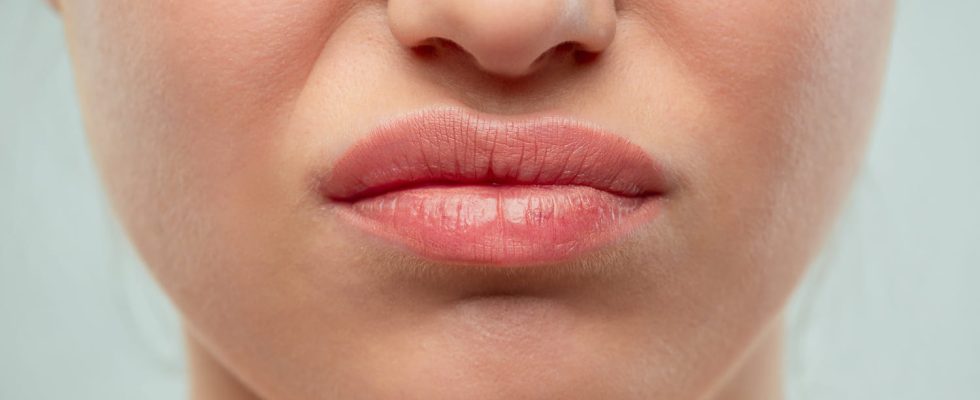Redness but also sometimes itching, burning… What is the fault? Rosacea? Seborrhoeic dermatitis? Acne? Psoriasis? In any case, it is necessary to treat, warns our dermatologist. Advice.
Rosaceaseborrheic dermatitis, acne, psoriasis are the origin of unsightly redness around the nose, causing scratching, burns and various lesions. These skin pathologies must must be consulted at a dermatologist in order to benefit from care and treatment adapted to each case. The dot with the Dr Marc Perussel, dermatologist and venereologist at the University Hospital of Rennes, member of the SNDV (National Syndicate of Dermatologists-Venereologists).
What causes redness around the nose?
The redness around the nose is inflammations of the skin, which are very bothersomeboth aesthetically and pathologically. “They are part of dermatological disorders that absolutely must be treated which concerns both adolescents and adults.“, explains Doctor Marc Perrussel, dermatologist and venereologist. Indeed, this redness can burning and itching, sometimes even giving rise to cuts. We can identify several causes at the origin of this redness:
► in adolescence, at the time of acne, pimples appear around the nose, due to excess seborrhoea
► hyperseborrhoea can also cause these redness: “This is the case of the so-called seborrheic dermatitis caused by the presence of a pathogenic fungus on the skin to which some people are more vulnerable“, continues the specialist. The attack of the face is expressed most often by small oily scales on the forehead, eyebrows and sides of the nose.
► “When the dermatitis seborrheic is associated with a body psoriasiswe speak of sebo-psoriasis“.
► Finally, the rosacea on a background of couperose, a condition that affects the vessels of the face, can cause redness around the nose.
“It is not enough to put a cream to mask”
Each pathology has its own treatment! “It’s not enough to put a masking cream, it’s a bit like putting white paint on mold stains!“, underlines the specialist. It must be taken into consideration that these rednesses, far from being trivial testify to sensitive and vulnerable skin.
► Cosmetics. “If the cosmetics and hygiene products are not adapted, that is to say if they are too aggressive or stripping, these rednesses can worsen and give rise to serious complications, such as corticosteroid-induced or dependent rosacea“. This is all the more true for women who wish to wear makeup.”A woman is not forbidden to wear make-up, it is better to turn to a range of non-comedogenic cosmeticsi.e. which do not clog the pores“.
► Anti-fungal medication. Seborrheic dermatitis must “be the subject of a anti-inflammatory and antifungal treatment based on Ketoconazole“.
► Corticosteroids. Psoriasis requires treatment local anti-inflammatory drugs, even corticosteroids.
►Laser. “Rosacea can be treated topically or orally with tetracycline. You can also add sessions of vascular laser, which emit “in the red”, the target being skin red“.
► Reduce sugar and milk. Certain external factors can aggravate pathologies: Acne outbreaks can be favored by too much sugar in the diet and the consumption of dairy products.
► Avoid tobacco and the sun. “Rosacea has often been blamed on alcohol, but it is a genetic problem that is made worse by smoking or intense sun exposure“.
How is the redness in case of mycosis?
There mycosis can actually locate on the face”but it is manifested by rounded lesions that are quite easy to detect. It is therefore easy to detect mycosis from other skin pathologies.” admits the dermatologist.
Is this a sign of too dry air?
The redness around the nose is linked to a mechanical friction effect that will dry out the nose. “Dry air will only accentuate this effect, for skin prone to dryness, who will be more irritated“. This explains why certain sensitive people have had more difficulties in supporting the mask. “Generally, stress, environmental conditions are only triggering factors, skin pathologies are above all land problems, which will then be reactivated in the form of pushes by these external parameters“, insists Doctor Marc Perrussel. This is the case for acne that also affects adultss or the psoriasis in chronic forms.
It is essential to consult a skin expert, namely a dermatologist. “What is a concern is the often complicated dermatological care, because you have to go through the general practitioner to have a letter and access to a specialist“. Dermatologists are also becoming increasingly rare: “Currently these are less than 103 dermatologists trained per year while 150 retire“, warns the dermatologist. The risk is that people heal themselves with unsuitable products and aggravate their pathologies, which can lead to disfigurements. “In addition, regardless of age, any skin pathology threatens the quality of life and can lead to depression.“. From where the need to consult because the dermatologist quickly and expertly gives a diagnosis by examining the skin.
Thank you to Doctor Marc Perrussel, dermatologist and venereologist from the University Hospital of Rennes, member of the board of the SNDV (National Union of Dermatologists-Venereologists).
